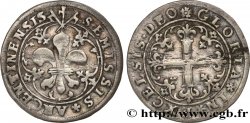fme_460726 - ANIMALS Médaille animalière - Rhinocéros
No disponible.
Artículo vendido en nuestra tienda (2018)
Precio : 200.00 €
Artículo vendido en nuestra tienda (2018)
Precio : 200.00 €
Tipo : Médaille animalière - Rhinocéros
Fecha: 1971
Nombre del taller / ciudad: France
Metal: cobre
Diámetro: 80 mm
Acuñador LÉCUYER Pierre (1933-
Peso: 224,70 g.
Canto: lisse + corne CUIVRE 1971 N° 39/100
Comentarios sobre el estado de conservación:
Médaille en état neuf, avec une belle patine brune et brillante
Anverso
Titulatura del anverso: ANÉPIGRAPHE.
Descripción del anverso: Tête de rhinocéros à gauche.
Reverso
Titulatura del reverso: ANÉPIGRAPHE.
Descripción del reverso: Deux rhinocéros à droite, dans un environnement de savane, avec des oiseaux volant et posés sur leur dos.
Comentario
Graveur plasticien, Jean Pierre LECUYER est né en 1940 dans les Vosges. Il est plus spécialisé dans la gravre sur bois, mais il réalisa aussi cette magnifique médaille en 1971 alors qu’à partir de 1965, il réalisa ses premiers bois gravés et débuta comme professeur d'éducation artistique...
Les rhinocéros sont les mammifères périssodactyles appartenant à la famille des rhinocérotidés (Rhinocerotidae). Toutes les espèces de rhinocéros sont actuellement menacées de disparition.
Les rhinocéros font localement l'objet d'une protection et de projets de réintroduction. Ils sont très utiles pour fertiliser le sol. Ils peuvent mesurer 4 m de longueur pour 1,50 m à 2 m de hauteur au garrot, et une masse pouvant avoisiner les 3 tonnes. Ce sont les plus gros mammifères terrestres actuels après l'éléphant. Les rhinocéros sont du même ordre que les chevaux et les tapirs, et non celui des éléphants. Leurs cris sont un barrissement, un grognement, un halètement. Le mot rhinocéros vient du grec rhinos, nez, et keras, corne, car il porte une ou deux cornes sur le nez, et non sur le front comme les autres mammifères cornus..
A visual engraver, Jean Pierre LECUYER was born in 1940 in the Vosges. He specializes more in wood engraving, but he also created this magnificent medal in 1971, while from 1965, he made his first woodcuts and began as an art education teacher... Rhinoceroses are perissodactyl mammals belonging to the rhinocerotidae family. All rhinoceros species are currently threatened with extinction. Rhinoceroses are locally the subject of protection and reintroduction projects. They are very useful for fertilizing the soil. They can measure 4 m in length by 1.50 m to 2 m in height at the withers, and a mass that can approach 3 tons. They are the largest current land mammals after the elephant. Rhinoceroses are of the same order as horses and tapirs, and not that of elephants. Their calls are a trumpet, a grunt, a gasp. The word rhinoceros comes from the Greek rhinos, nose, and keras, horn, because it has one or two horns on its nose, and not on its forehead like other horned mammals.
Les rhinocéros sont les mammifères périssodactyles appartenant à la famille des rhinocérotidés (Rhinocerotidae). Toutes les espèces de rhinocéros sont actuellement menacées de disparition.
Les rhinocéros font localement l'objet d'une protection et de projets de réintroduction. Ils sont très utiles pour fertiliser le sol. Ils peuvent mesurer 4 m de longueur pour 1,50 m à 2 m de hauteur au garrot, et une masse pouvant avoisiner les 3 tonnes. Ce sont les plus gros mammifères terrestres actuels après l'éléphant. Les rhinocéros sont du même ordre que les chevaux et les tapirs, et non celui des éléphants. Leurs cris sont un barrissement, un grognement, un halètement. Le mot rhinocéros vient du grec rhinos, nez, et keras, corne, car il porte une ou deux cornes sur le nez, et non sur le front comme les autres mammifères cornus..
A visual engraver, Jean Pierre LECUYER was born in 1940 in the Vosges. He specializes more in wood engraving, but he also created this magnificent medal in 1971, while from 1965, he made his first woodcuts and began as an art education teacher... Rhinoceroses are perissodactyl mammals belonging to the rhinocerotidae family. All rhinoceros species are currently threatened with extinction. Rhinoceroses are locally the subject of protection and reintroduction projects. They are very useful for fertilizing the soil. They can measure 4 m in length by 1.50 m to 2 m in height at the withers, and a mass that can approach 3 tons. They are the largest current land mammals after the elephant. Rhinoceroses are of the same order as horses and tapirs, and not that of elephants. Their calls are a trumpet, a grunt, a gasp. The word rhinoceros comes from the Greek rhinos, nose, and keras, horn, because it has one or two horns on its nose, and not on its forehead like other horned mammals.








 Informar de un error
Informar de un error Imprimir la página
Imprimir la página Comparte mi selección
Comparte mi selección Haz una pregunta
Haz una pregunta Consignar / vender
Consignar / vender
 Descriptivo
Descriptivo












